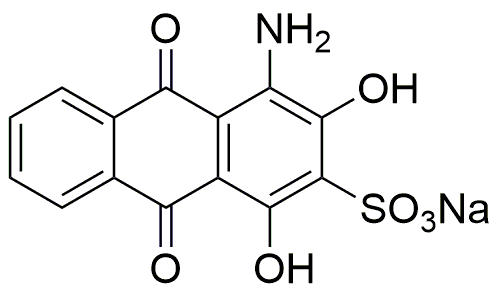Nuclear fast red is widely utilized in research focused on:
- Histological Staining: This compound is primarily used in histology for staining tissue sections, allowing for the visualization of cellular structures under a microscope. It is particularly effective in highlighting nuclei, making it invaluable for pathologists and researchers.
- Cell Biology: In cell biology studies, it aids in identifying and analyzing cell types and their morphology. This is crucial for understanding cellular functions and interactions in various biological processes.
- Immunohistochemistry: Nuclear fast red serves as a counterstain in immunohistochemical techniques, enhancing the contrast of antibody-stained tissues. This application is essential for researchers studying protein expression in tissues.
- Environmental Monitoring: The compound is also used in environmental studies to assess the impact of pollutants on cellular structures in aquatic organisms, providing insights into ecological health.
- Educational Purposes: It is commonly employed in educational laboratories for teaching histology and microscopy techniques, helping students gain hands-on experience with staining methods.
General Information
Properties
Safety and Regulations
Applications
Nuclear fast red is widely utilized in research focused on:
- Histological Staining: This compound is primarily used in histology for staining tissue sections, allowing for the visualization of cellular structures under a microscope. It is particularly effective in highlighting nuclei, making it invaluable for pathologists and researchers.
- Cell Biology: In cell biology studies, it aids in identifying and analyzing cell types and their morphology. This is crucial for understanding cellular functions and interactions in various biological processes.
- Immunohistochemistry: Nuclear fast red serves as a counterstain in immunohistochemical techniques, enhancing the contrast of antibody-stained tissues. This application is essential for researchers studying protein expression in tissues.
- Environmental Monitoring: The compound is also used in environmental studies to assess the impact of pollutants on cellular structures in aquatic organisms, providing insights into ecological health.
- Educational Purposes: It is commonly employed in educational laboratories for teaching histology and microscopy techniques, helping students gain hands-on experience with staining methods.
Documents
Safety Data Sheets (SDS)
The SDS provides comprehensive safety information on handling, storage, and disposal of the product.
Product Specification (PS)
The PS provides a comprehensive breakdown of the product’s properties, including chemical composition, physical state, purity, and storage requirements. It also details acceptable quality ranges and the product's intended applications.
Certificates of Analysis (COA)
Search for Certificates of Analysis (COA) by entering the products Lot Number. Lot and Batch Numbers can be found on a product’s label following the words ‘Lot’ or ‘Batch’.
*Catalog Number
*Lot Number
Certificates Of Origin (COO)
This COO confirms the country where the product was manufactured, and also details the materials and components used in it and whether it is derived from natural, synthetic, or other specific sources. This certificate may be required for customs, trade, and regulatory compliance.
*Catalog Number
*Lot Number
Safety Data Sheets (SDS)
The SDS provides comprehensive safety information on handling, storage, and disposal of the product.
DownloadProduct Specification (PS)
The PS provides a comprehensive breakdown of the product’s properties, including chemical composition, physical state, purity, and storage requirements. It also details acceptable quality ranges and the product's intended applications.
DownloadCertificates of Analysis (COA)
Search for Certificates of Analysis (COA) by entering the products Lot Number. Lot and Batch Numbers can be found on a product’s label following the words ‘Lot’ or ‘Batch’.
*Catalog Number
*Lot Number
Certificates Of Origin (COO)
This COO confirms the country where the product was manufactured, and also details the materials and components used in it and whether it is derived from natural, synthetic, or other specific sources. This certificate may be required for customs, trade, and regulatory compliance.


